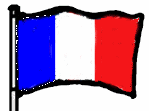 (des sources variées, pas inclus dans Coste) :
(des sources variées, pas inclus dans Coste) :
Grande plante vigoureuse à tiges creuses érigées, rougeâtres, semblables à des cannes de bambou, de 1 à 3 m de haut. Rhizome/hémicryptophyte érigée : les tiges aériennes meurent l'hiver et seuls persistent des bourgeons souterrains et/ou au raz du sol.
Écologie : [Introduit] zones alluviales et les rives des cours d'eau, formant de larges fourrés denses. Aussi bords des routes, alentours des jardins, terrains abandonnés.
Répartition hors de France :
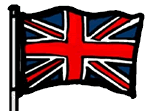 (modified from Butcher, British Flora 1961):
(modified from Butcher, British Flora 1961):
NOTE: the French text is more complete and up-to-date
A large plant with stout, red, erect, annual stems 90-150 cm high, growing from a thick, creeping rootstock. Hollow stems with distinct raised nodes that give it the appearance of bamboo , though it is not closely related. While stems may reach a maximum height of 3-4 m each growing season, it is typical to see much smaller plants in places where they sprout through cracks in the pavement or are repeatedly cut down.
Ecology UK: (distribution according to flora) Native to Eastern Asia. In Europe the species is very successful and has been classified as an invasive species in several countries., including the UK
Fleurs : blanches, petites, disposées en panicules à l'aisselle des feuilles ; 5 tépales persistantes, 8 étamines et 3 styles.Grappes souvent > 50% de la feuille correspondante, toujours dressées et pas fertiles en France
Floraison France : septembre-octobre
Flowers: 4 mm diam., cream or white, long stalked, in terminal and axillary panicles; perianth lobes 5, white, ovate, suberect; stamens 6-8, becoming longer than the lobes; styles 3, rather long; outer perianth winged in fruit.
Flowering UK: Mid Aug.-late Sept
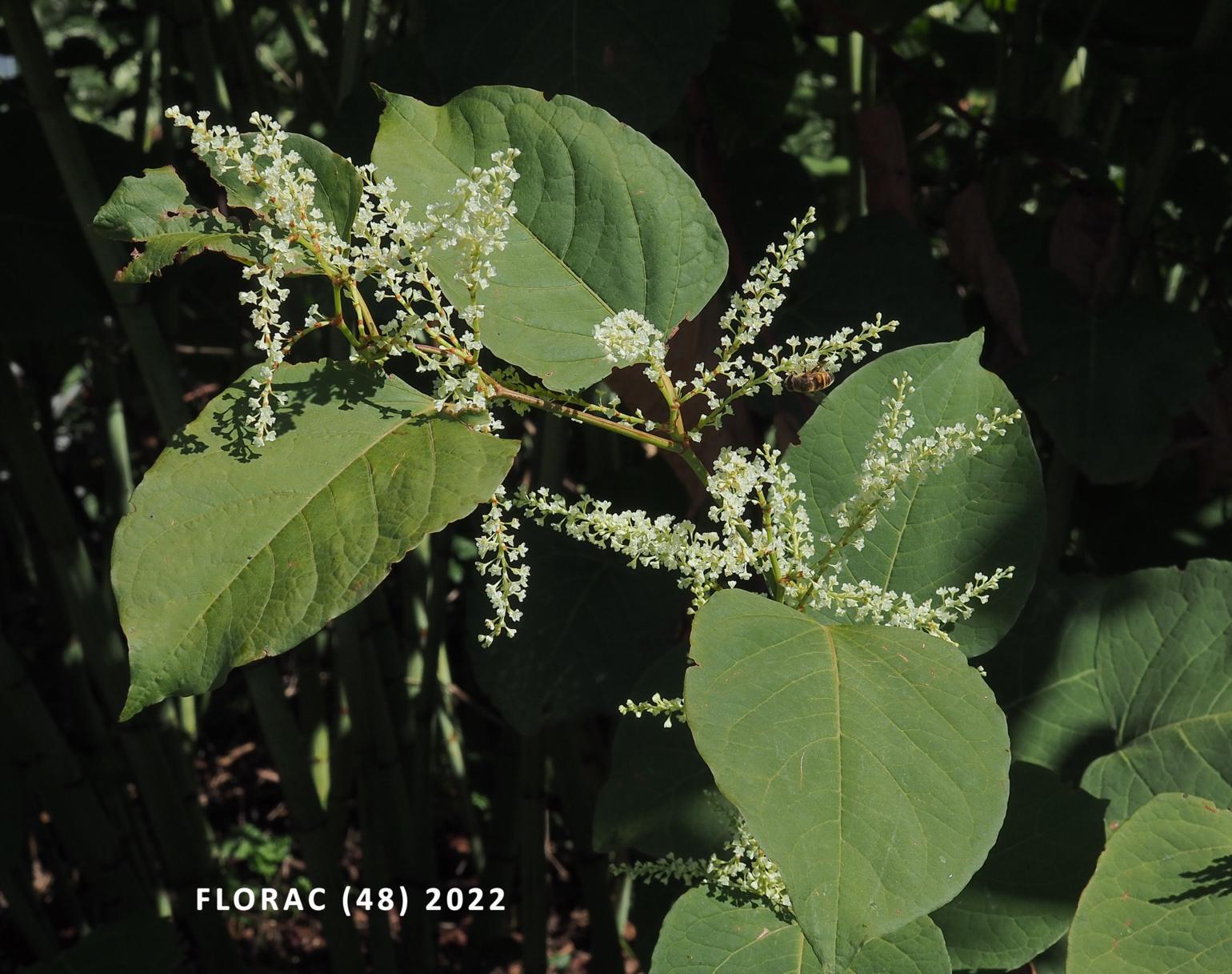
 Knotweed, Japanese
Knotweed, Japanese
 Renouée de Japon
Renouée de Japon
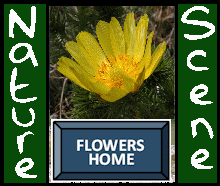


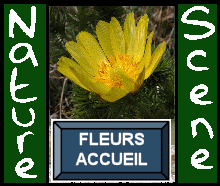
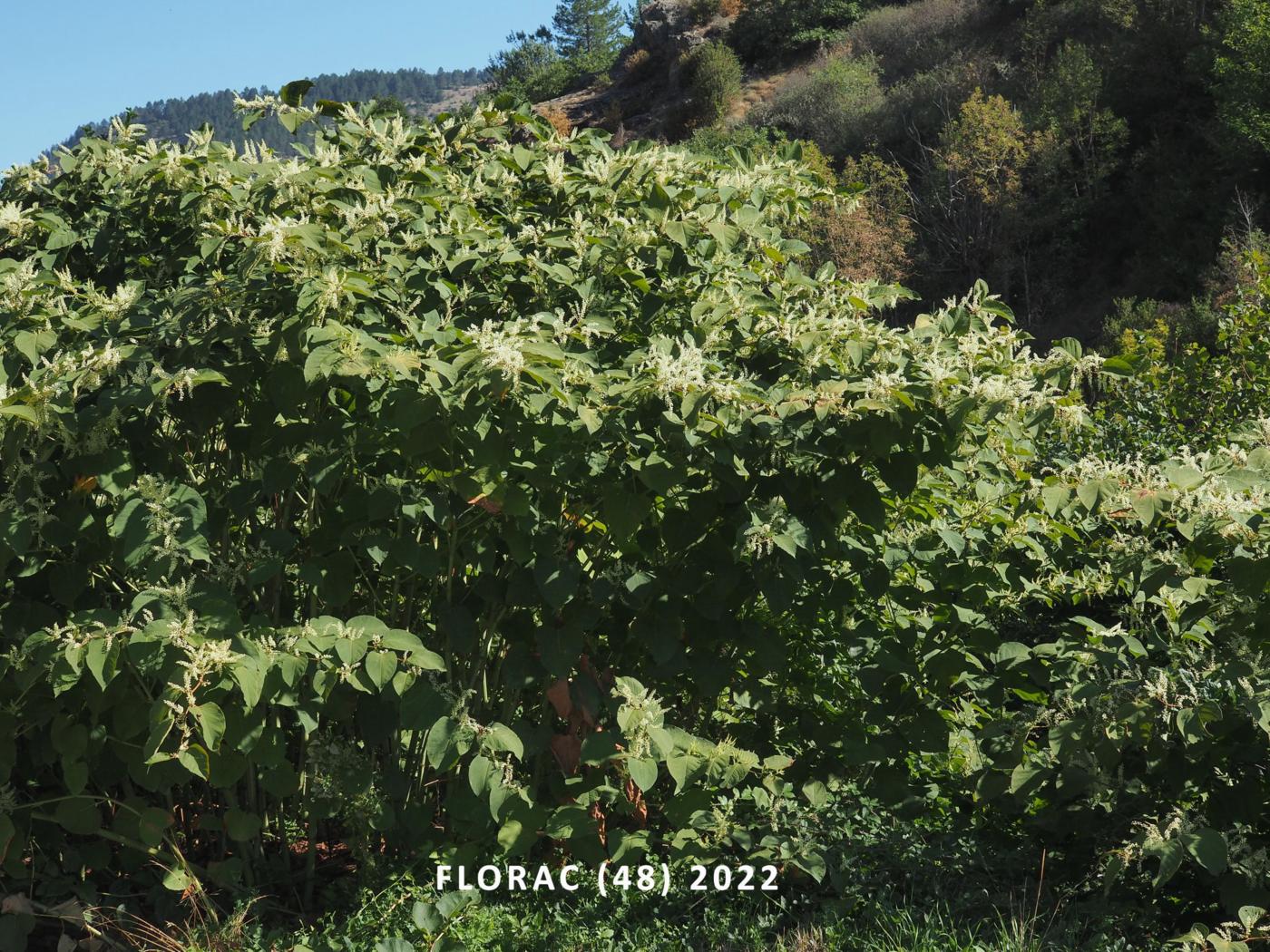
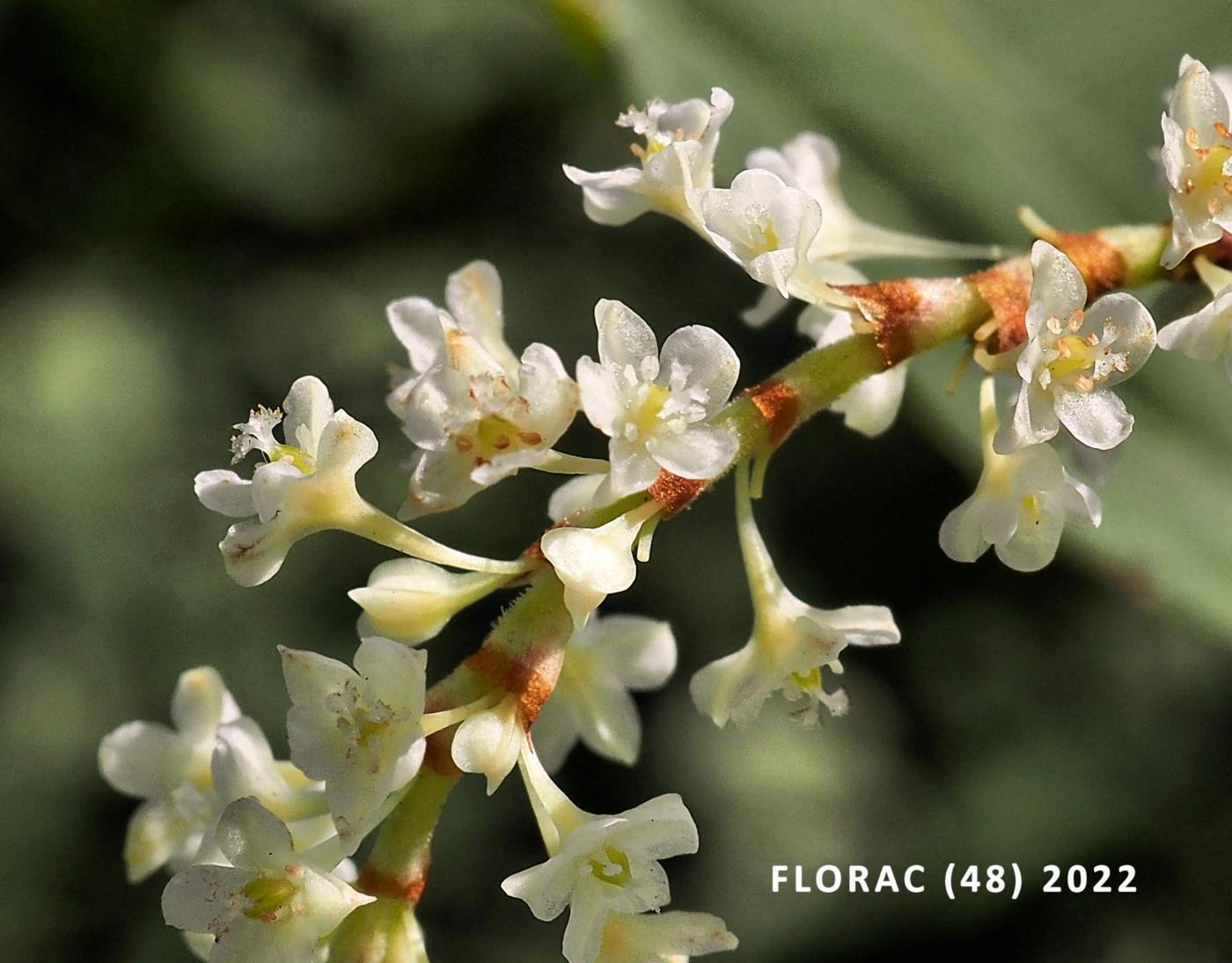
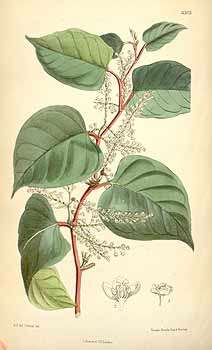
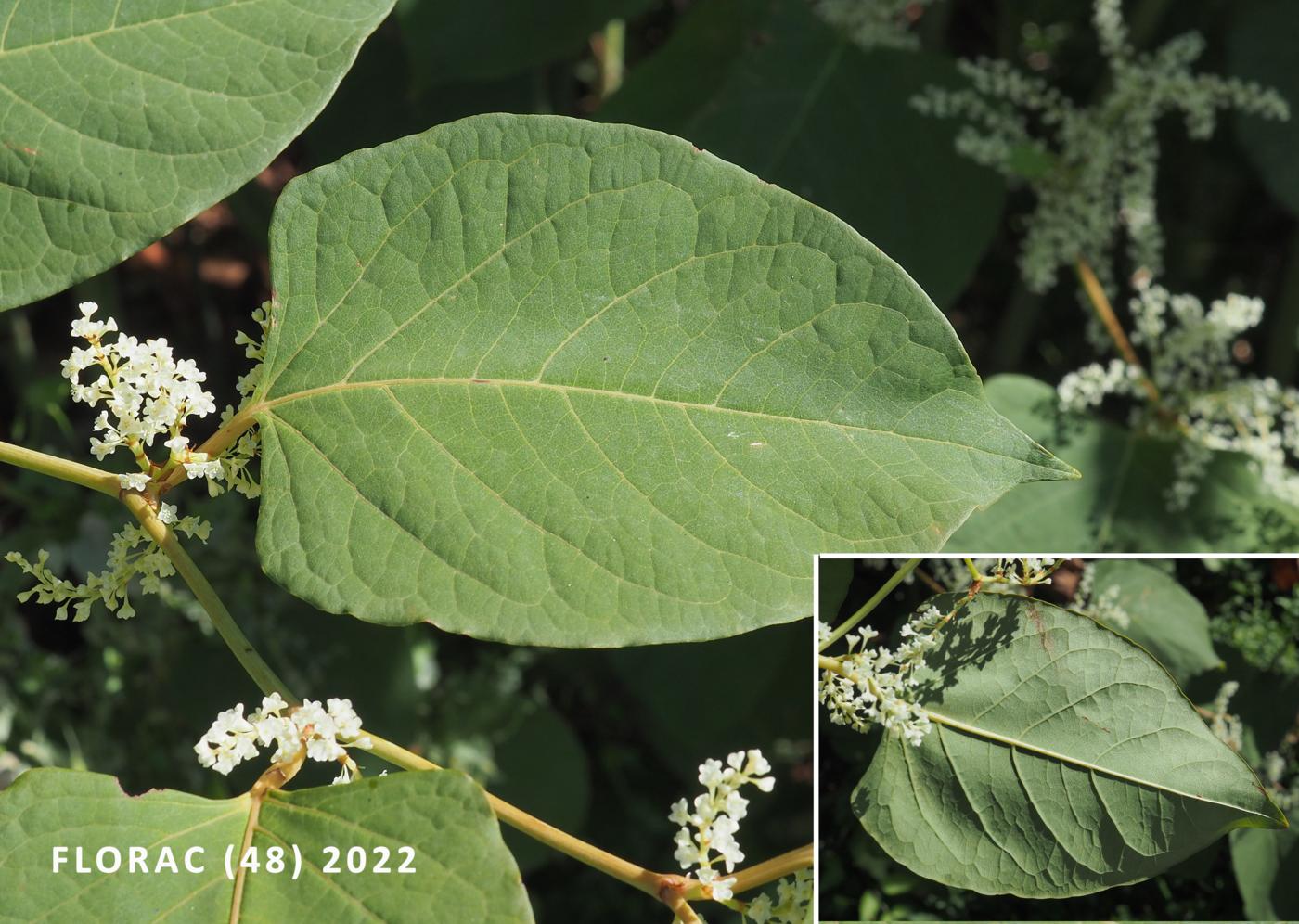
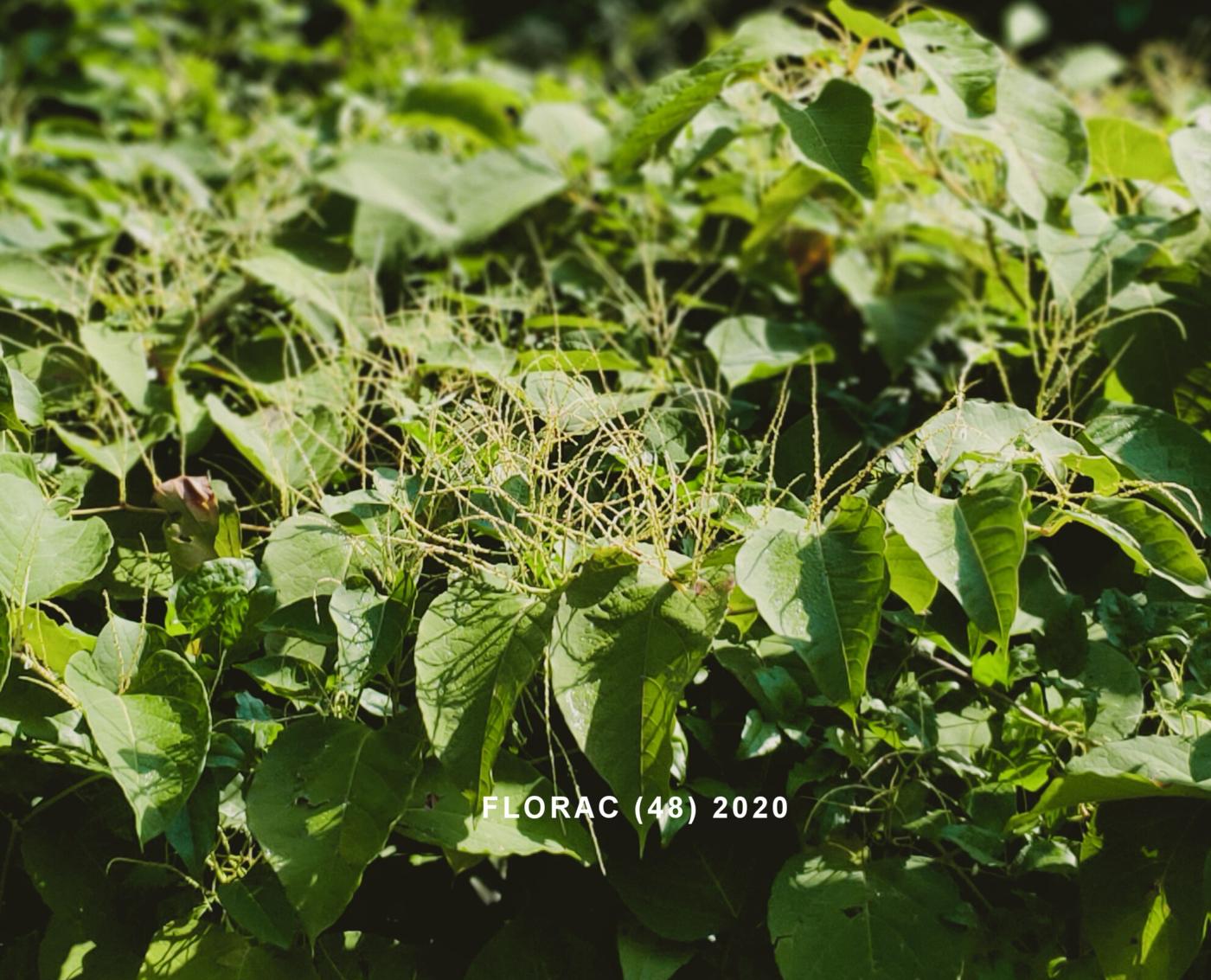
 Please
consider
Please
consider 











